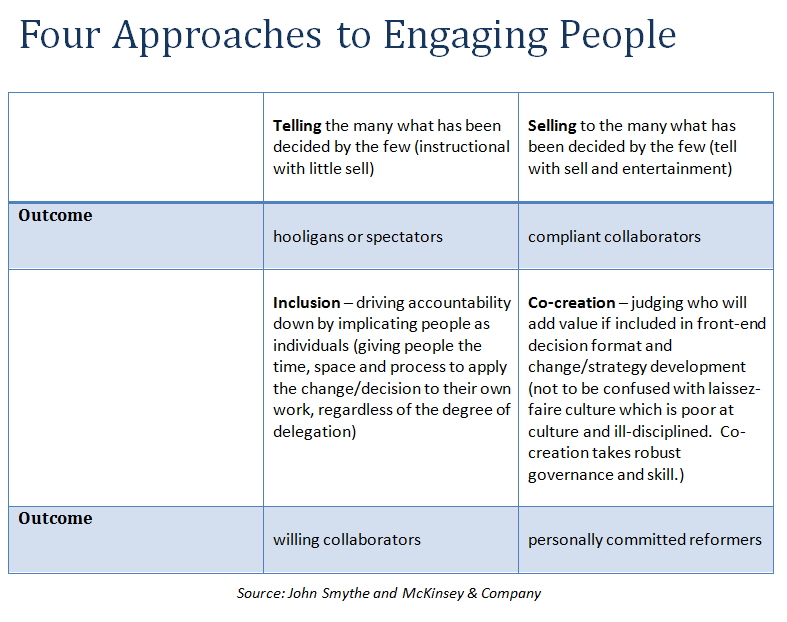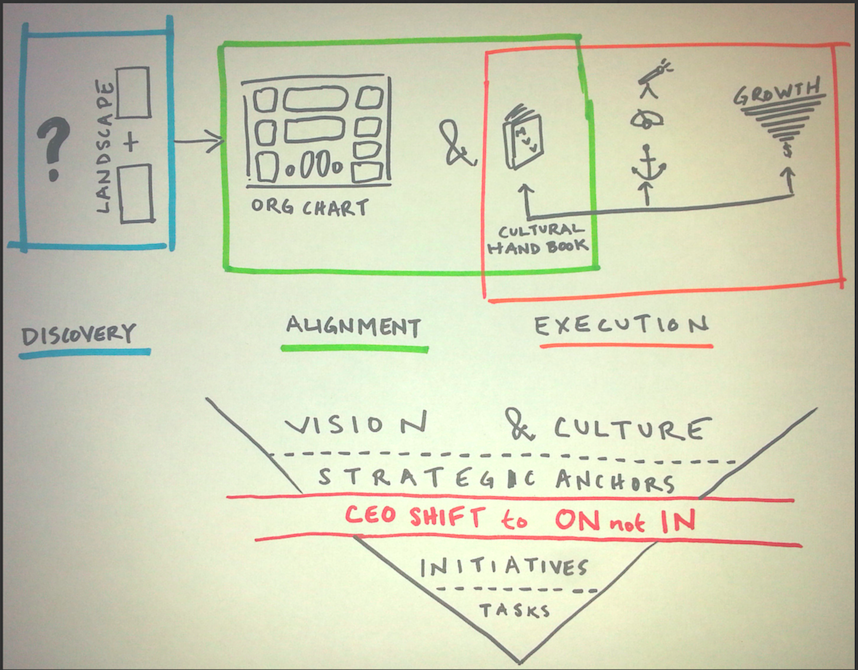How do you transition or transform a culture to own the vision with you? One of the challenges I see with many churches is that the Ephesians 4:11-14 passages are aspirational far greater than a reality. Too few people are doing too much of the work with the rest sitting and watching.
11 And he gave the apostles, the prophets, the evangelists, the shepherds and teachers, 12 to equip the saints for the work of ministry, for building up the body of Christ, 13 until we all attain to the unity of the faith and of the knowledge of the Son of God, to mature manhood, to the measure of the stature of the fullness of Christ, 14 so that we may no longer be children, tossed to and fro by the waves and carried about by every wind of doctrine, by human cunning, by craftiness in deceitful schemes.
Building a culture of engagement is critical, but how do you do it? It was 8-years ago as a Pastor of a church we began a major transition toward a new way of being the church, through launching Missional Communities. You can learn a bit about our experience when I spoke at an Acts 29 Bootcamp, in 2009 on the topic of Practical Missional Ecclesiology. Yet the reality is that the transition was harder and many people did not make it through the transition. I know I’m not alone as many of the people I’ve talked with have struggled in this transition. I appreciate a lot of what Todd Engstrom reports on their experience at Austin Stone, including that after 2 years of launching MC’s only 10% were living out that vision and 5-years later this number grew to 50%. Read his blog, very helpful! When we struggled because people didn’t buy in at the level we hoped, I was frustrated. It left me scratching my head and feeling the vision justified the shifts we felt compelled to make. It was in the years to follow, upon reflection, that I felt something wasn’t right. Lately I’ve read a couple books (see below for recommended reading) about influence and engagement that pinpointed some of the challenges we faced and how I’d do it differently.
It was 8-years ago as a Pastor of a church we began a major transition toward a new way of being the church, through launching Missional Communities. You can learn a bit about our experience when I spoke at an Acts 29 Bootcamp, in 2009 on the topic of Practical Missional Ecclesiology. Yet the reality is that the transition was harder and many people did not make it through the transition. I know I’m not alone as many of the people I’ve talked with have struggled in this transition. I appreciate a lot of what Todd Engstrom reports on their experience at Austin Stone, including that after 2 years of launching MC’s only 10% were living out that vision and 5-years later this number grew to 50%. Read his blog, very helpful! When we struggled because people didn’t buy in at the level we hoped, I was frustrated. It left me scratching my head and feeling the vision justified the shifts we felt compelled to make. It was in the years to follow, upon reflection, that I felt something wasn’t right. Lately I’ve read a couple books (see below for recommended reading) about influence and engagement that pinpointed some of the challenges we faced and how I’d do it differently.
How would I do lead change differently? 
Step 1: Create Engagement: Learn the top 6 actions to create engagement.
- Communicating a clear vision of the future
- Building trust in the organization
- Involving employees in decisions that affect them
- Demonstrating commitment to the company’s values
- Being seen to respond to feedback
- Demonstrating genuine commitment to employees’ well being
Step 2: Co-create: I’d recognize we told, sold and at best implicated people in the transition. We never really co-created what this future could look like. When the leadership changes the vision abruptly, a covenant of trust is damaged unless this is led well. I recommend you pre-order (comes out 10/14) a copy of Caesar Kalinowski new book Small Is Big, Slow Is Fast: Living and Leading Your Family and Community on God’s Mission.
In Small Is Big, Slow Is Fast, Caesar Kalinowski blows up assumed and accepted ideas behind kingdom growth and presents counter-intuitive models that demonstrate that at the end of the day, multiplication wins—not addition. Each of the chapters unpacks the natural process steps of kingdom growth: Engage, Equip, and Expand. You will discover the secret to starting out small and going (seemingly) slower—and not feeling guilty about it. And you’ll be encouraged to trust that when you lay the right foundations, multiplication will occur and it will always be “faster” and more successful in the long run. You don’t have to have the talents of a rock star or the wisdom of Yoda to effectively and naturally live a life on mission, making disciples who make disciples. Instead, it is the everyday ordinary things done with greater gospel-intentionality that will make all the difference…slowly, over time. Learn to respond to God’s call to each of us right where we’re at—in our own families and neighborhoods.
 Step #3: Influence instead of Control: Learn how to leverage highly valuable behavior through influence. Adapt the elements from Influencer: The New Science of Leading Change, Second Edition with the gospel to make them less legalistic and more freedom-based.
Step #3: Influence instead of Control: Learn how to leverage highly valuable behavior through influence. Adapt the elements from Influencer: The New Science of Leading Change, Second Edition with the gospel to make them less legalistic and more freedom-based. 
I’m glad to have another opportunity to serve at a local church in helping shape the future transition to the missional community model using these ideas. It’s definitely going to be a go slow to go fast approach.
Recommended Reading: Influencer: The New Science of Leading Change, Second Edition, The CEO Chief Engagement Officer: Turning Hierarchy Upside Down to Drive Performance and The Art of Servant Leadership: Designing Your Organization for the Sake of Others
.

